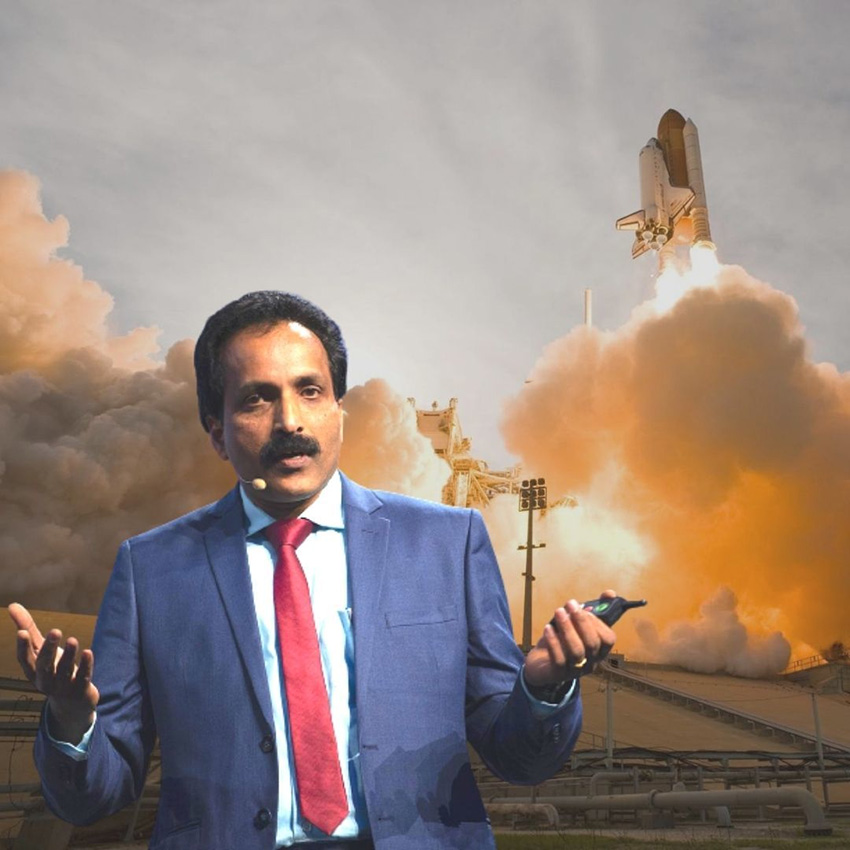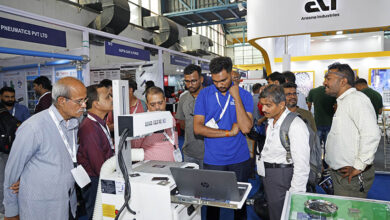Wishing India’s moon lander a safe and soft touchdown on the Lunar Surface
By R. Anil Kumar
- The main objective of India’s third lunar mission is to master the technology of soft-landing
- Corrective measures have been initiated on the factors of failures experienced during the last (Chandrayaan 2) mission-ISRO Chief
Bangalore, July 11. Sreedhara Panicker Somanath, ISRO’s current chief, would for sure prefer a pat on the back rather than a comforting hug at the end of the upcoming Rs. 615 crore Chandrayaan-3 mission.

Landing (not crashing) on the moon is the central objective of ISRO’s planned third lunar exploration mission, slated to launch on July 14.
It is the most important of the mission’s three elements of technology demonstration — reaching the lunar orbit, soft-landing a lander, and getting a rover to slide out of it and crawl on the moon surface.
Speaking on the corrective measures that has been initiated for the success of the Chandrayaan 3 mission, especially to soft landing on the lunar surface, the ISRO Chief S. Somanath, ahead of the Chandrayaan-3 launch scheduled on July 14,saidthe Indian space agency has perfected the part of reaching up to the moon. But it was the landing that the agency is working on.

“Instead of doing a success-based design, which we did in Chandrayaan-2, we are going forward with a failure-based design for Chandrayaan-3, he said.
The analysis from the Chandrayaan-2 mission, which was launched on July 22, 2019 and eventually made what the space agency described as a “hard landing” on September 6, unearthed three mistakes that occurred.
“The first challenge was that the five engines that were used for retardation (reduction of velocity), developed slightly higher thrust than was intended,” he said, explaining that this excess led to a cascade of small problems that began accumulating, including a lack of stability during a phase when the craft is supposed to be steady in order to take pictures.
The second was that corrections to the trajectory on account of the excess thrust created a sort of “accumulation” of problems that were dealt with too late, and the “the spacecraft started making very fast turns. This hampered the ability of the spacecraft to turn”, he said.
The third was that the spacecraft was trying to reach a landing spot that was still far away while it was already too close to the surface. The landing spot was limited to a 500 metres x 500 metres patch and the craft was trying to reach it by increasing its velocity.
“There was a contradictory requirement of reaching the exact landing spot while also maintaining low velocity… In a nutshell, in Chandrayaan-2 the ability to handle parameter variation was limited and we have made corrections to that,” Somanath said.
Explaining some of the key corrections, the ISRO Chief added that the target landing spot has been expanded from a 500m x 500m patch to a 4km x 2.5km area “so that it will not limit the craft to a small space”.
“We also increased fuel capacity so that it can move to an alternative landing site,” he added.
Somnath said the scientific objective of the Chandrayaan-2 “orbiter was already met, what was not met was the scientific objective of the lander and rover”.
Chandrayaan-3 consists of an indigenous lander module, a propulsion module and a rover. Its objectives include developing and demonstrating new technologies required for interplanetary missions. The lander will have the capability to soft land at a specified lunar site and deploy the rover, which will carry out in-situ chemical analysis of the lunar surface during the course of its mobility.
This mission, the space agency chief said, will lay the foundation for another moon mission, the details of which will be announced later.
“ISRO is known for frugal engineering. We are known globally to successfully conduct exploratory missions at a much cheaper cost… We are in talks with the Japan Aerospace Exploration Agency (JAXA) for another moon mission. Details will be shared soon.”
The Indian lunar exploration programme is an ongoing series of outer space missions by ISRO. The first moon rocket, Chandrayaan-1, was launched in 2008, and was successfully inserted into lunar orbit.
Chandrayaan-2 was successfully launched and inserted into lunar orbit in 2019, but its lander “crash-landed” on the moon’s surface when it deviated from its trajectory while attempting to land on September 6, 2019, due to a software glitch.
Apart from these — and perhaps luck — there is little difference between the Chandrayaan-3 and Chandrayaan-2 lander-rovers. A soft touchdown on the moon surface on August 23 or 24 would make India the fourth country to demonstrate lunar soft-landing (after the US, the former Soviet Union and China).
–A Report by R. Anil Kumar, India Strategic, Bengaluru





